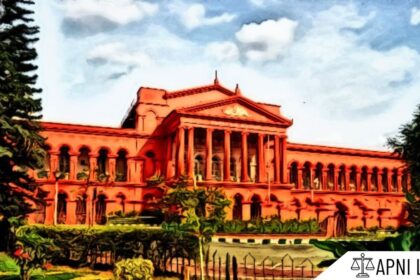Introduction
The Right to Information (RTI) Act, 2005, is a powerful tool that empowers Indian citizens to seek transparency and accountability from public authorities. Over the years, several landmark Supreme Court judgments have played a vital role in interpreting and expanding the scope of the RTI Act. These decisions have clarified key provisions, reinforced the public’s right to know, and held institutions, including the judiciary, financial regulators, and political parties, accountable to the people. By addressing grey areas and resisting undue exemptions, the judiciary has ensured that the spirit of transparency remains strong in India’s democracy.
CBSE v. Aditya Bandopadhyay & Ors. (2011)
In CBSE vs. Aditya Bandopadhyay (2011), the Supreme Court emphatically ruled that examinees have the right under Section 3 of the RTI Act to inspect and obtain certified copies of their evaluated answer‑books. CBSE’s opposing argument, that bye‑law 61(4) prohibiting answer‑sheet scrutiny constituted a “fiduciary relationship” exclusion under Section 8(1)(e), was decisively rejected. The Court held that Bye‑law 61(4) could not override the RTI Act’s overriding mandate (per Section 22), and that the evaluated answer‑books constituted “information” as defined in the Act. This judgment not only expanded the definition of information but set a precedent that public examination results must be transparent to ensure accountability in educational assessments.
Central Public Information Officer, Supreme Court of India v. Subhash Chandra Agarwal (2019)
In the watershed 2019 judgment in CPIO, Supreme Court vs. Subhash Chandra Agarwal, a five‑judge Constitution Bench unanimously held that the Office of the Chief Justice of India (CJI) qualifies as a “public authority” under Section 2(h) of the RTI Act. The bench, including then Chief Justice Gogoi, Justices Ramana, Chandrachud, Deepak Gupta, and Sanjiv Khanna, ruled that judicial independence does not conflict with transparency, and that each RTI request relating to the judiciary must be decided based on a balancing test between public interest and privacy or confidentiality.
The Court directed its CPIO to reconsider disclosure applications, including collegium correspondence and judges’ asset declarations, under the statutory framework of Section 11 and subject to objections by third parties. This landmark ruling firmly brought the judiciary within the ambit of RTI, reinforcing citizens’ right to governmental transparency without undermining institutional autonomy.
Public authorities cannot refuse information due to administrative inconvenience
Supreme Court jurisprudence has consistently reinforced that public authorities cannot deny RTI disclosure simply on grounds of administrative inconvenience or workload. Procedural burdens do not justify refusal. A citizen’s right to information is fundamental and must take precedence over internal administrative motivations.
RBI and financial disclosure judgements
In Reserve Bank of India v. Jayantilal N. Mistry (2015), the Supreme Court unequivocally held that the RBI does not share any fiduciary relationship with individual banks, rejecting RBI’s refusal to disclose inspection reports and defaulter information under RTI Act exemptions (Section 8(1)(e)). The Court emphasized that RBI’s statutory duty is to act in the public interest, not to shield banks and that financial disclosures concerning irregularities serve public accountability. The decision asserted that regulatory data received from banks under statutory mandate cannot be withheld as confidential. It underscored the Act’s design to foster transparency even in economic and financial realms essential to democracy.
Political parties as public authorities (2013)
In its 2013 ruling (Subhash Chandra Agrawal vs. Parliament of India), the Central Information Commission, and later affirmed in legal commentary and implementation efforts, concluded that national political parties such as INC, BJP, CPI, CPI(M), NCP and BSP qualify as “public authorities” under Section 2(h) of the RTI Act. The rationale was that they receive substantial public funding and perform public functions, thereby necessitating citizen access to information. Although implementation has been inconsistent and contested, including legislative amendments, the CIC order remains a seminal judicial affirmation for political transparency.
Public interest override to exemptions under Section 8
Supreme Court jurisprudence has reinforced the principle that the public interest can override certain RTI exemptions under Section 8, especially in matters of corruption, public safety, or human rights violations. Courts have made clear that denials under Section 8 must pass a public interest test, and procedural convenience cannot be used to deny access. This jurisprudential strand ensures that citizens’ right to information prevails in issues of broader societal concern, anchoring the Act’s underlying democratic premise.
Expanding the RTI to private entities performing public functions
Courts and the Central Information
Commission have also extended the RTI Act’s reach to private bodies substantially funded or performing public functions, such as privatized utilities or NGOs receiving significant government funding. While the Supreme Court itself has not yet delivered a formal judgment in all such cases, CIC decisions and authoritative interpretations (e.g. Sarbjit Roy vs. Delhi Electricity Regulatory Commission) affirm that entities performing essentially public duties,nand financed substantially by government, fall within the ambit of Section 2(h) and are therefore subject to RTI disclosure obligations.
Conclusion
The Supreme Court has consistently upheld the core values of the RTI Act, transparency, accountability, and informed citizenry, through progressive and far-reaching judgments. Whether it is bringing the office of the Chief Justice under RTI, allowing students to access their answer sheets, or mandating financial disclosures by regulatory bodies, the Court has emphasized that the right to information is intrinsic to the right to life and freedom of expression. These judicial interventions have not only expanded the law’s reach but have also reinforced the belief that a transparent government is essential for a vibrant democracy.








